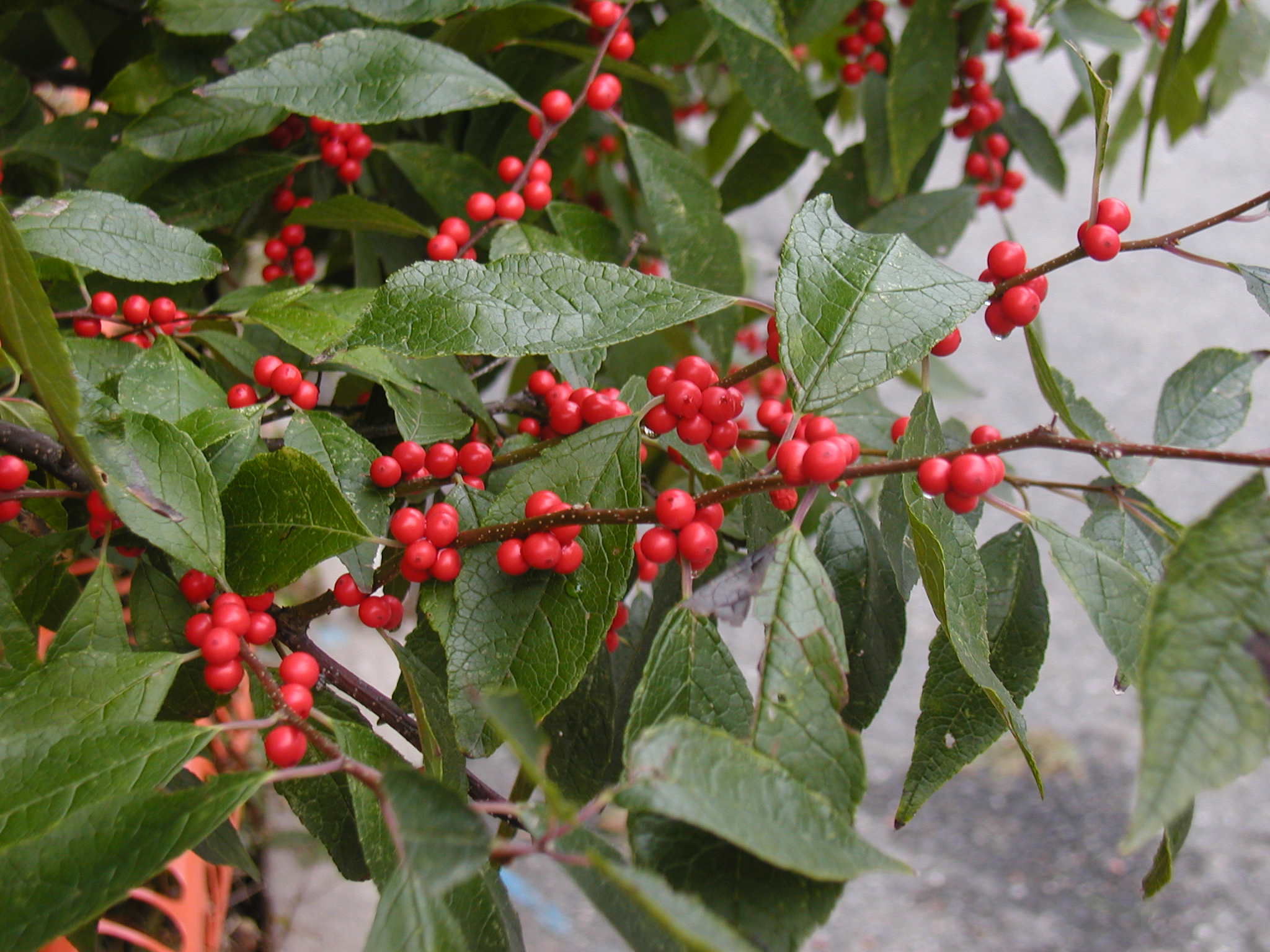Ilex verticillata
Winterberry is a deciduous shrub species that typically grows about 3 m in height. The leaves are dark green coloured, alternately arranged, and have toothed margins. The flowers are small, greenish white coloured, not showy, and bloom between June and July. The fruit are attractive, bright red berries, which are not edible, only grow on female plants nearby male plants, and persist throughout the winter, hence the name. This plant spreads well and can form small colonies. The roots can useful for controlling erosion and stabilizing shorelines. The berries are highly beneficial to wildlife species, like birds and small mammals, throughout the winter.Winterberry grows best in normal to wet conditions with full or partial sun exposure. It prefers organically rich, poorly drained humus and loam but can grow in a variety of soil types, including sand and clay. It is tolerant of periodically flooded areas, clay, acidity, and air pollution. This shrub can be naturally found in wet meadows, wet forests, around marshes or swamps, and along river or lake shorelines.
Scientific Name: Ilex verticillata
Type: Shrub
Height: 3 m
Spread: 1 m
Moisture Level: moist, wet
Light Conditions: full sun, part sun
Soil Conditions: sand, clay, loam, acidic
Zone (Hardiness of Canada):

